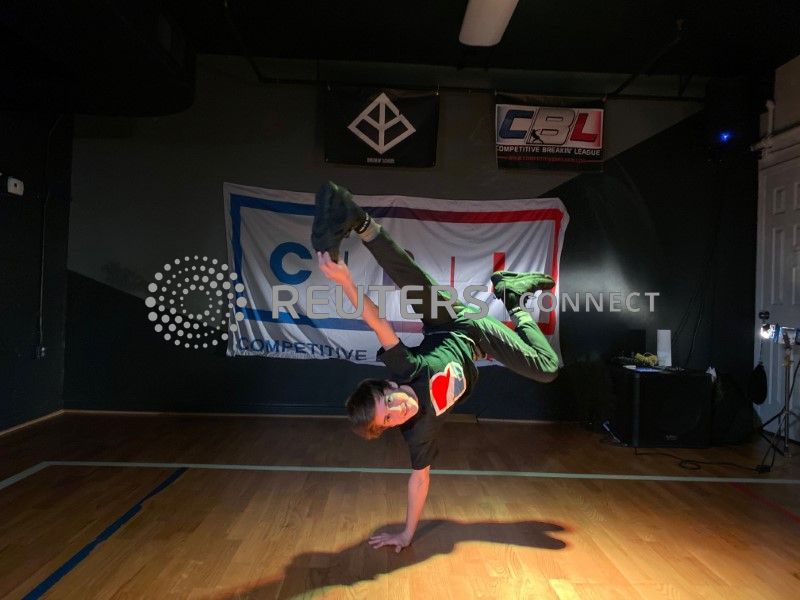WASHINGTON (Reuters) – Antonio Castillo discovered the joyful athleticism of breakdancing as a child in Mexico in the 1980s. Now a new generation of young people comes to his Washington studio to learn the finer points of a dance style that has evolved into a sport, hoping one day to bring home Olympic gold.
Castillo wants his mostly teenaged students to know that the art form that he prefers to call “breakin’,” which was born on the streets of New York City in the 1970s, is not an exercise in nostalgia.
“It’s been evolving ever since,” said the 38-year-old coach. “They saw it in movies, spinning on their head or doing footwork or whatever the case may be. But they didn’t think about it as a sport.”
Now the International Olympic Committee is on the verge of making it one.
Breakdancing was among four sports, along with skateboarding, sports climbing and surfing, that the IOC provisionally agreed last year to add to the Paris Games in 2024 in an effort to attract a younger, more urban audience. A final decision is expected in December.
Castillo has had a hand in giving the sport a framework.
In the Competitive Breakin’ League, which he launched almost seven years ago, breakdancing has as a point system for judging, belt-rankings similar to those used in martial arts, and a confined performance space as used in sumo wrestling.
As a member of the USA Breakin’ Committee, he is working to field the first U.S. national team by the end of the year.
It is a far cry for a kid from a ranch in Mexico, whose first exposure to breakdancing was seeing his cousins do it when they visited and who started trying to emulate the dance moves of Michael Jackson when he was 5 or 6.
After coming to the United States when he was 9, Castillo began dancing hip hop to the likes of rappers MC Hammer and Vanilla Ice. But it was seeing the movie “Breakin’” when he was 13 that set him on his life’s breakdancing course.
He began teaching the sport at a Washington gym he managed and in 2011 he opened The Lab Breakin’ School, one of a handful of schools in the country dedicated to the sport. A year later, he made the school his full-time occupation.
“If it wasn’t for breakin’, I don’t know where I would be,” said Castillo, who also teaches after-school classes and does motivational talks for young people.
The prospect of breakdancing as an Olympic sport opens a world of opportunity for the most talented of Castillo’s “b-boys” and “b-girls,” many of whom come from underprivileged backgrounds.
Some of his 700 students are already dreaming of Olympic glory.
“I’ve always been like … can this be what I do, like, forever?” said Isaac Witte, 13, between practice rounds on the dance floor. “Now it kind of can because of the Olympics … it’s super exciting.”
Witte and his friend, Evan Sletten, 14, recently won a national competition and train together nearly every day.
But, Castillo said, the prospect of Olympic glory also brings with it a unique pressure on the athletes who represent breakdancing’s home country to bring home gold.
“It’s the birthplace of hip hop culture, right?” he added. “The United States – we created this.”



